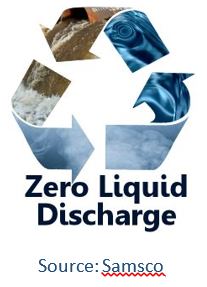

 Stringent civic regulations to reduce heavy surface water contamination has led manufacturing companies to adopt industrial effluent treatment systems. Most of these systems are focused on desalination and reuse of wastewater. While this approach lessens the effluent volume, companies have to pay for the discharged treated water. In case of increased production and plant expansion, this practice is a substantial cost for companies.
Stringent civic regulations to reduce heavy surface water contamination has led manufacturing companies to adopt industrial effluent treatment systems. Most of these systems are focused on desalination and reuse of wastewater. While this approach lessens the effluent volume, companies have to pay for the discharged treated water. In case of increased production and plant expansion, this practice is a substantial cost for companies.
To become more cost efficient, companies are exploring effluent-treatment alternatives, such as Zero Liquid Discharge (ZLD) systems, that enable companies to save costs for water treatments, clean water acquisition, and disposal. In this treatment system, plants are able to establish a closed loop cycle where they recycle and reuse the water and extracted chemicals and sell or use the solidified discharge for other purposes.
The client, a global healthcare major, wanted to reduce and recycle the 300 Kilo Liters per Day (KLD) treated effluent that was being discharged to the Common Effluent Treatment Plant (CETP) in potential utility and process areas.
The client had an effluent treatment plant design with the capacity of 800 KLD from which about 650 KLD of effluent was currently generated. From the local authorities, they obtained an approval of discharging 300 KLD of treated effluent to the CETP and 400 KLD for use in greenbelt development within the plant premises. The ultimate objective was to set up a ZLD facility at the site that prevented any future wastewater discharge into the nearby water sources.
L&T Technology Services’ (LTTS) key objective was to develop a cost-competent ZLD strategy using concept-engineering methodologies and help the client achieve their closed loop operation goals.
LTTS had to ensure that the ZLD treatment system could treat all the elements in the effluent optimally. The proposed equipment, pipelines and machinery needed to have a maximum capacity of 800 KLD of liquid, taking any future expansions into consideration.
LTTS collated and analyzed all the data from the existing facility to develop a set of the engineering concept documents. For the civil deliverables, LTTS:
The team at LTTS took just over one month to deliver the entire concept engineering project package. Along with the reports, designs, specifications, and other scope documents, LTTS provided the client with a list of recommendations for EPC vendors. LTTS also estimated the project CAPEX to be INR 3.2 Crores.

